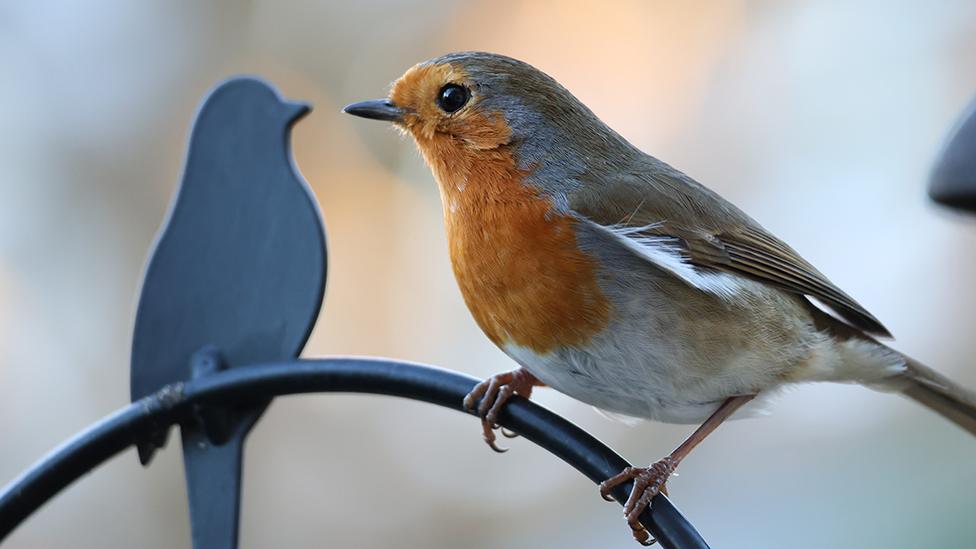Gloucestershire study finding out where garden birds go at night
- Published

The robin was among the garden birds who formed part of the study
A university study is finding out where garden birds sleep at night during the winter.
The University of Gloucestershire said it wanted to uncover the night-time secrets of some of Britain's most familiar garden birds.
It had remained "one of the last great mysteries of the animal kingdom", it added.
The research will also be used to provide data to help address their decline in numbers.
The birds have to survive up to 16 hours of darkness and cold when they are unable to feed, and choosing a good sleeping site is crucial to their surviving the long winter months.
The team involved in the study, including six students from the University's MSc Applied Ecology programme, are using Very High Frequency (VHF) radio tracking to find where the birds roost in the evenings, the first such study to do so the university said.
The team worked with the Gloucestershire Naturalists Society to record the winter night-time roosting habits of four popular woodland species - the European robin, Eurasian blackbird, great tit and dunnock.
Birds staying local
Senior lecturer in practical ecology at the university, Dr Mark O'Connell, said: "Our findings suggest that none of the birds we were tracking flew large distances to get to their roost sites, but were using vegetation in local areas where they were located during the day.
"It was clear that there were differences between the species in roosting behaviour, particularly in relation to variation in height of the roost site and the vegetation types used."
The European robin was found to roost within eight metres of its roost site from the previous night. The Eurasian blackbird, great tit and dunnock tended to roost up to 20 metres away from their previous roost location.
The study suggested that both species prefer sites no higher than four metres above the ground, but the Eurasian blackbird and great tit choose sites that were more than six metres high.
In terms of places where they roost, European robins favoured laurel trees. In contrast, the study found the Eurasian blackbird roosted in a range of different habitats between nights, including sycamore, bamboo, bramble, laurel and evergreen pines.
Dunnocks were found to roost in ivy-covered tree stumps, bramble, hawthorn and a range of garden shrubs. The great tits in the study roosted in beech and sycamore, and occasionally laurel.
The results of the study, funded by the British Ecological Society, will be used to help inform and support the management of woodland areas to protect species. It follows a national assessment that showed a 37% decline in woodland birds since 1970.

Follow BBC West on Facebook, external, X, external and Instagram, external. Send your story ideas to: bristol@bbc.co.uk , external
Related topics
- Published27 January 2024

- Published26 January 2024
